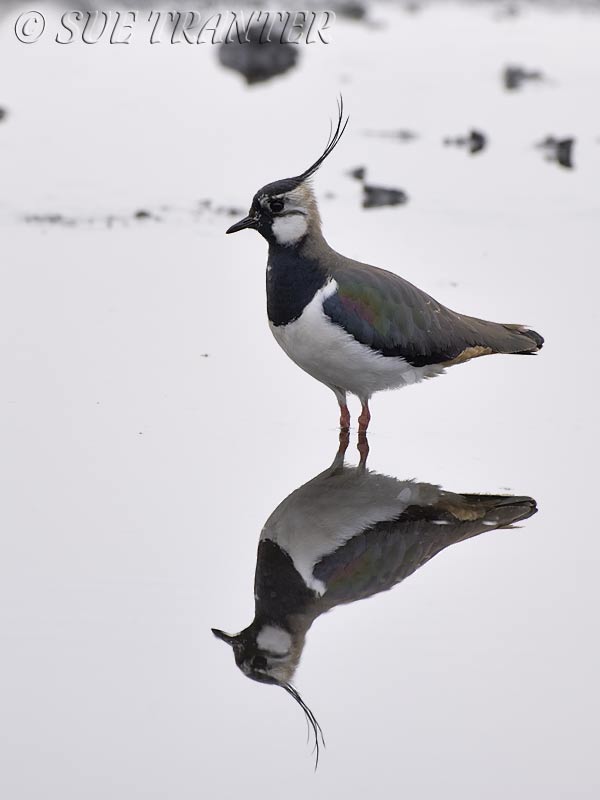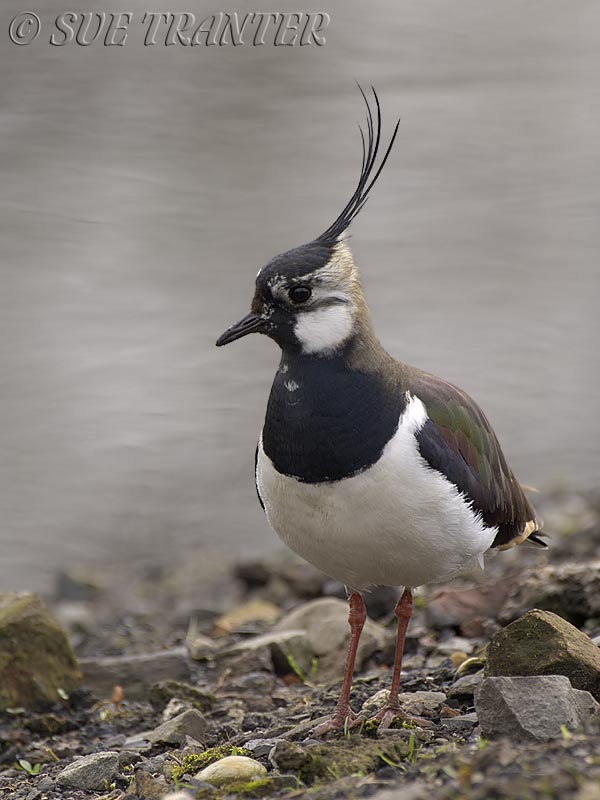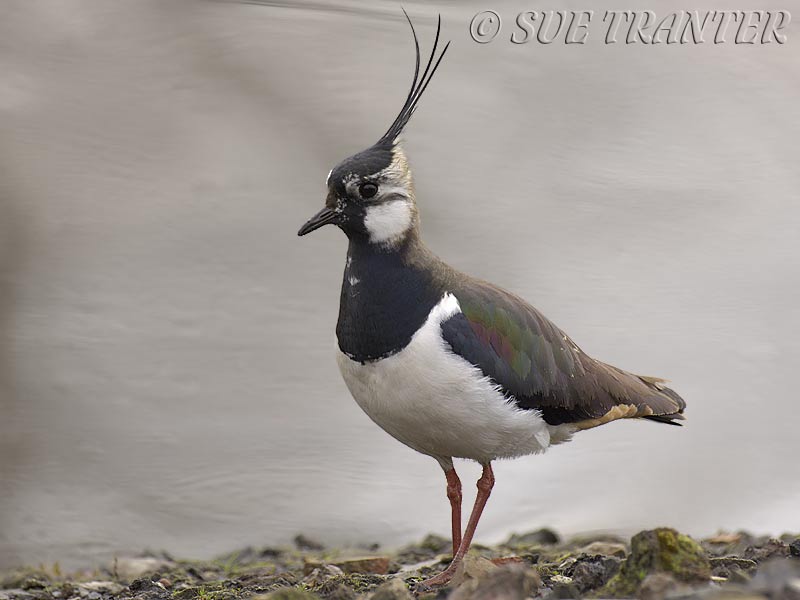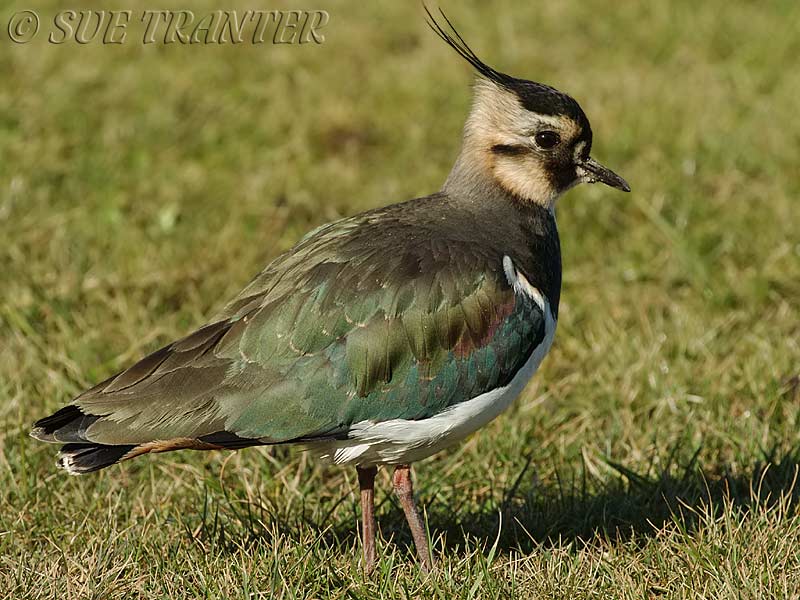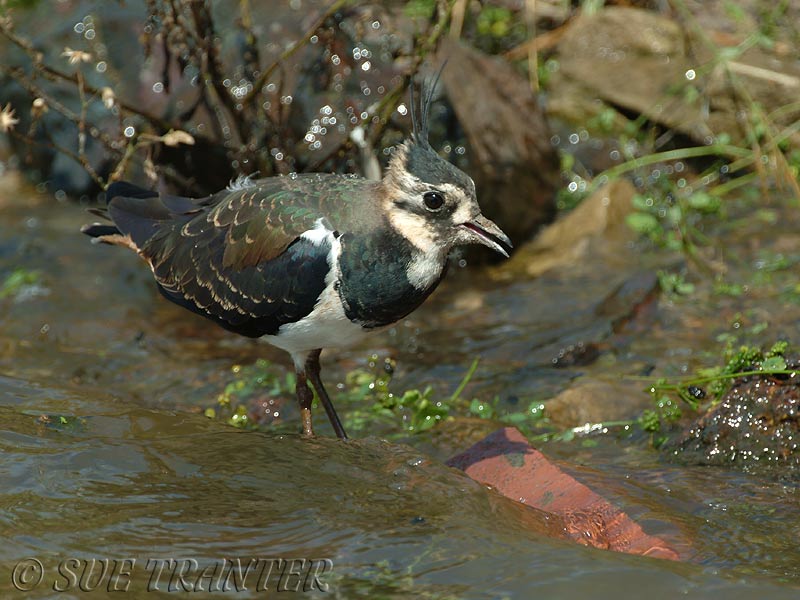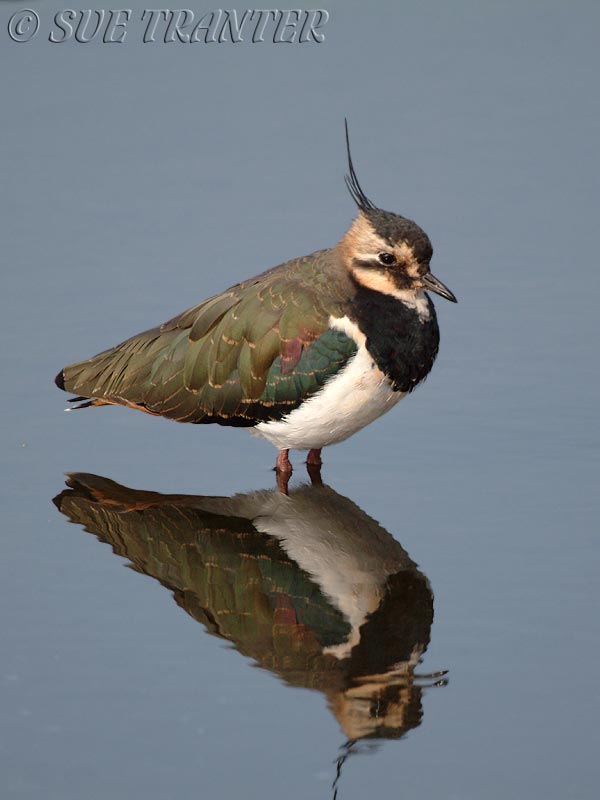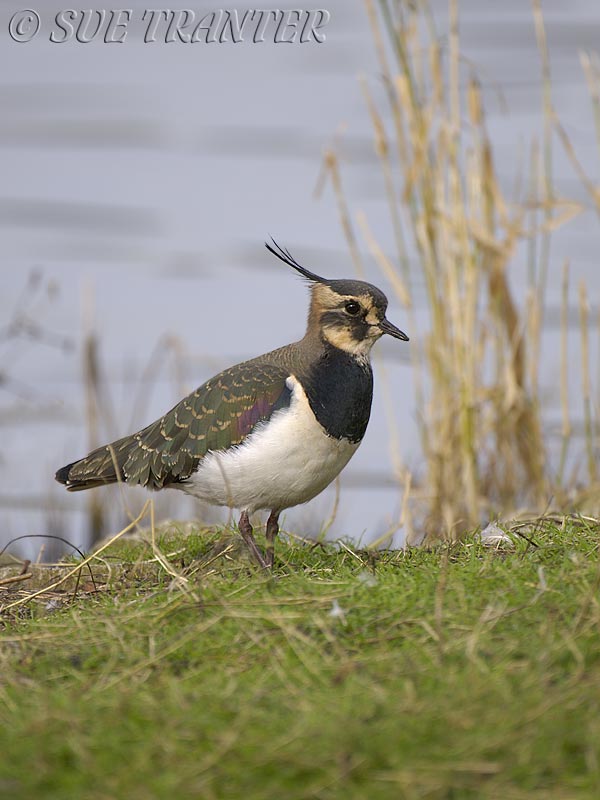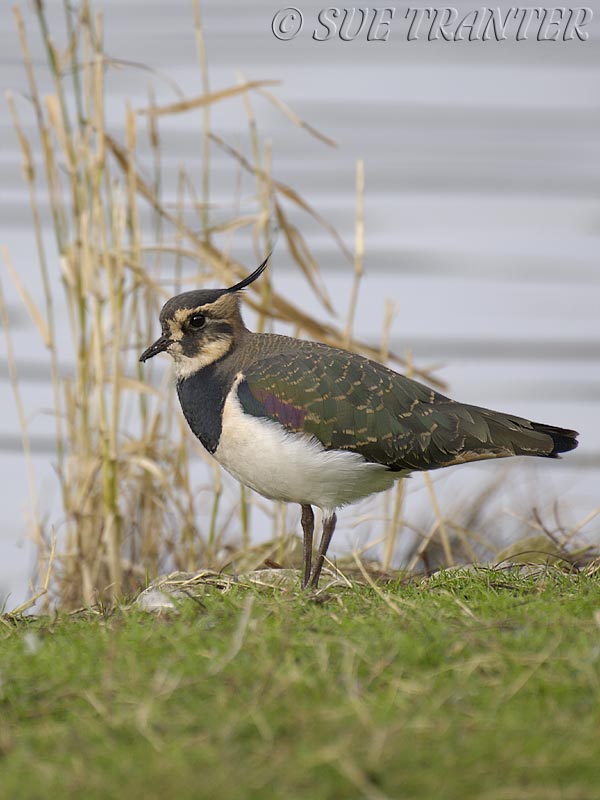Back To

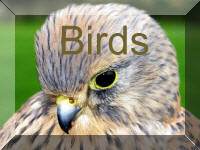

Known also as the peewit in imitation of its display calls, its proper
name describes its wavering flight. Its black and white appearance and
round-winged shape in flight make it distinctive, even without its splendid
crest. This familiar farmland bird has suffered significant declines in
the last 25 years and is an Amber List' species because of the importance
of its UK wintering population.
Where does it live?
Breeding
Mainly breeds on farmland, especially among crops sown in spring which
are adjacent to grass and bare land. Also on pasture, wet grassland and
marshes.
Wintering
Flooded grassland, estuaries, coastal wetlands, short grassy fields and
ploughed fields.
Where to see it
Lapwings are found on farmland throughout the UK particularly in lowland areas of northern England, the Borders and eastern Scotland. In the breeding season prefer spring sown cereals, root crops, permanent unimproved pasture, meadows and fallow fields. They can also be found on wetlands with short vegetation. In winter they flock on pasture and ploughed fields. The highest known winter concentrations of lapwings are found at the Somerset Levels, Humber and Ribble estuaries, Breydon Water/Berney Marshes, the Wash, and Morecambe Bay.
What does it eat?
Worms and insects
What does it sound like?
Call a wheezing 'pee-ee-wit'; song includes 'eyuweep' and 'weep-weep' phrases.
Click here to here The lapwing
When to see it
All year round. Leaves upland areas after the breeding season and moves to lowland fields for the winter. Large numbers of N European birds arrive in autumn for the winter.
